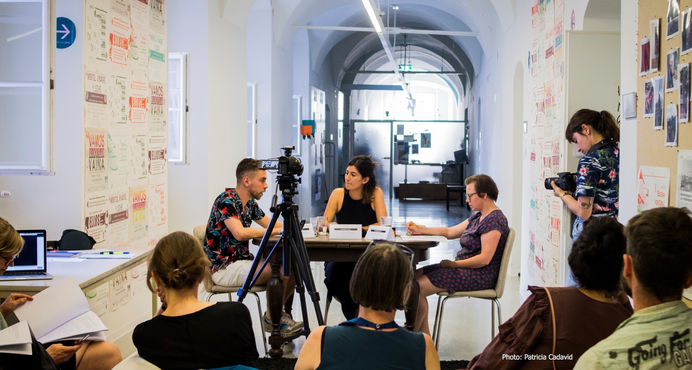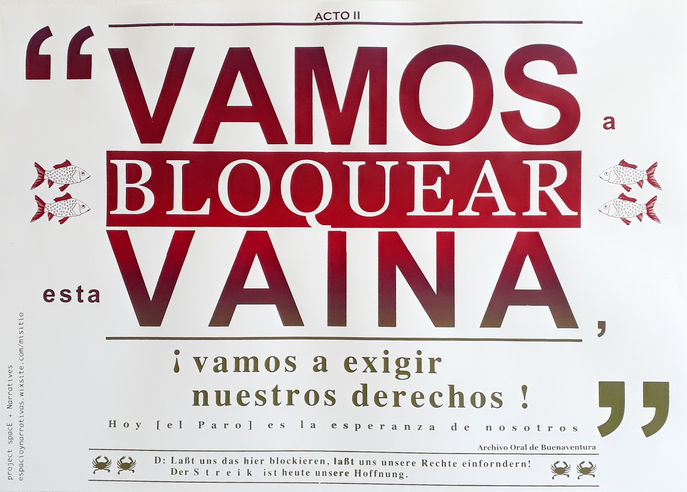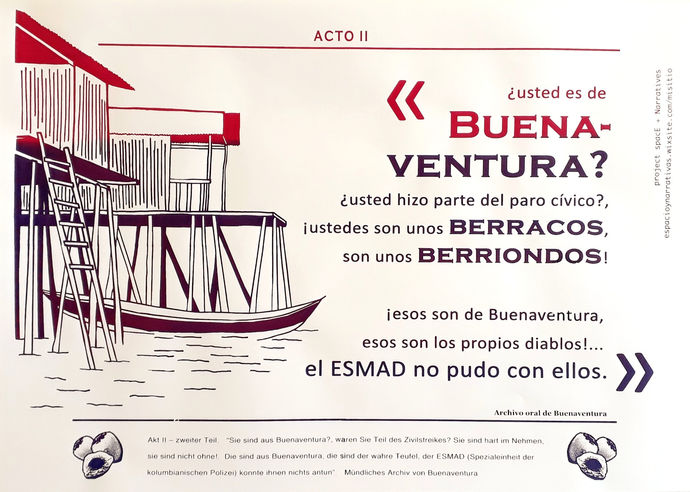Buenaventura,
The Story of a Shipwrecked city
Buenaventura is a coastal city located to the southwest of Colombia, a biodiverse territory surrounded by rivers where is located the most important seaport of the country, which is, in turn, one of the 10 most important in Latin America and whose activity brings to the country more than two billion pesos annually in tax collection. Despite the abundance of natural resources and the millions of economic profits generated by the port, only 75% of the population of Buenaventura has access to the aqueduct network, which runs between four and eight hours two days a week, 64% of the city's inhabitants live under the poverty line and about 30% are unemployed.
In Buenaventura, territorial dispossession, displacement and forced disappearances have become a daily affair; the inhabitants of this city have been facing for almost two decades a scenario of growing violence perpetrated by illegal (and also legal) armed actors articulated with private investors to seize control of strategic territories linked to the port expansion project.
The story of a Shipwrecked city is a piece inspired by the testimonies of the Group of Archive and Memory of the Commune 6 of Buenaventura and that portrays the struggle for territory and the persistent attempt of the inhabitants of this city to build horizons of hope in the midst of a daily life marked by acts of violence and uncertainty about their own well-being and permanence in the territory.
This portrait is told by a narrator who, through the stories of her family and neighbours, leads us to revisit the memory of the territory, particularly the one on which the roots of its inhabitants to their land are grounded, and which in turn mobilises their struggles to remain in it. This (docu-fiction) script of three acts constitutes the starting point of the exploration that is carried out in this work around the problem of the representation of the narratives of the space, which goes from oral to written language, from written to visual and from there to the language of performance.
>>
This written piece is based on the testimonies of the Grupo de Archivo y Memoria de la Comuna 6 de Buenaventura. The narrator of this story revisits the memory of the territory, particularly that which roots its inhabitants to this land, and which in turn, mobilizes their resistance and their struggle for remaining in it.
Language: Spanish / German
>>
These graphic pieces are inspired in the graphic language of the street billboards commonly found in Colombian cities, they contain excerpts from the story and visualizations of some motifs included in it.
Serigraphy
420 x 594 mm
>>
The Performance 'Mesa Italiana / Read-through', was the result of collaborative work with the Media Culture and Theory Department of the Kunstuniversität Linz.

>>
Mesa Italiana / Read-through
Sebastian Palasser, Andrea Heredia, Karin Harraser.
Kunstuniversität Linz, 28.07. 2019.




